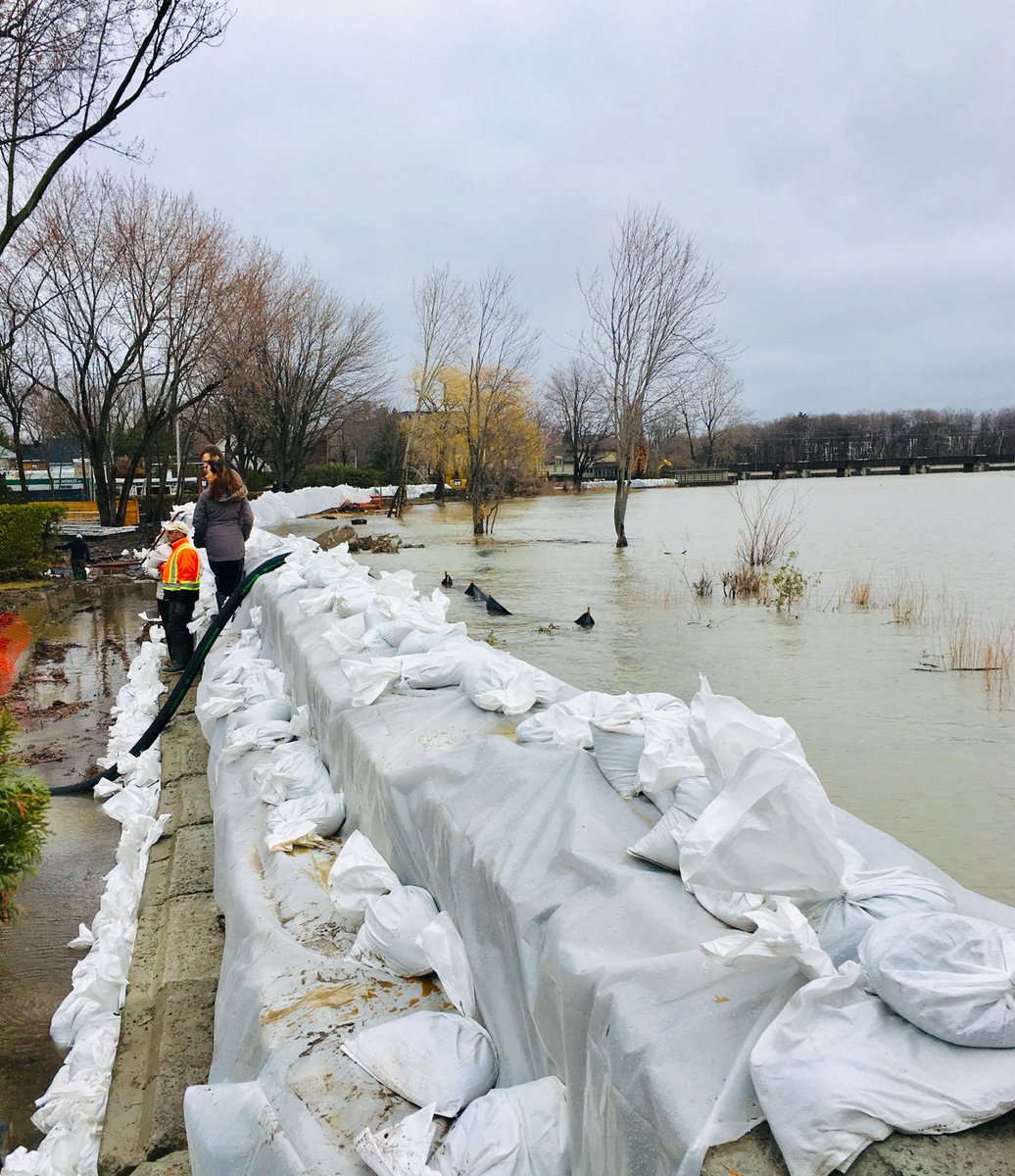
MONTREAL – Although the only bridge to Montreal is cut off by water and hip waders are the only way to navigate the streets of his town, Ile Mercier resident David Dostie has no intention of leaving the home where’s he’s lived for almost 60 years.
“I decided to work all my life for that house, I’m not going to leave – never,” Dostie said Tuesday. “If I leave the house, the government’s not going to pay (us). We have to keep the house, so we have to stay here.”
Dostie’s attitude is a common one on Ile Mercier, a tight-knit island community of about 50 homes just off Montreal’s West Island.
Residents have banded together since public security officials closed the only bridge linking the island to the city on Monday, after warm temperatures and melting snow caused the Prairies River to swell and submerge the structure in fast-rushing water.
Dostie relaxed under a makeshift tent, eating lunch that had been carried across the bridge in the bucket of a heavy vehicle, the only kind able to pass. While the water ran knee-deep down the street, he said his home was dry and he wouldn’t leave unless the water breached the sandbag wall protecting it.
“We got boats, we got gas pumps, we’ve got generators, so we’re OK,” he said.
Next to him, fellow resident David Cauchon appeared equally at ease. Cauchon lost his home in the record-breaking flood of 2017, but is confident his new one can withstand the rising water.
“If I don’t have water in the house, I don’t have a problem,” he said.
The foundations of many of the island’s homes were piled high with sandbags, while humming pumps shot graceful arcs of water into the flooded streets.
Much of the credit for that preparation goes to Olivier Ishii-Landry, a flood-prevention specialist who lives on the island and who installed many of the pumps.
He was in constant motion as he used a small power boat to carry generators, check pumps, and ferry journalists and residents to and from the island.
He said many residents have fully rebuilt their homes since 2017, and have installed waterproof foundations and better groundwater management systems.
“We have the logistics in place to deal with it much better,” he said. “Our island looked like a war zone a full week before the mainland even got the news something was about to happen.”
Pier-Luc Cauchon, a resident who has become the island’s unofficial leader, spent the day organizing docks and boat owners to ferry residents to and from the island next door.
He estimates that at least 26 of the island’s 50 or so households are staying put, and most others are going back and forth.
In addition to conferring with police and officials, he organized a team of volunteers to knock on the door of every resident every four hours to make sure they had enough food and water.
“We make lists of needs, we see if anyone wants to evacuate, things like that, but so far everyone is confident and everyone wants to stay,” he said.
Elsewhere in the province, the number of homes that were flooded declined slightly on Tuesday, from 3,100 to 2,800 at 1 p.m.
Urgence Quebec said more than 1,400 people had been forced from their homes across the province and some 2,100 properties remain isolated because of washed out roads or landslides.
Authorities said they expected water levels to peak by Wednesday. But flooding risks remain high across southern Quebec, particularly the corridor between the Outaouais area west of Montreal and the Beauce region south of Quebec City.
Public Security Minister Genevieve Guilbault visited Sainte-Marie, Que., in the Beauce area, and met with several mayors of towns affected by the overflowing Chaudiere River.
Several hundred people left their homes in that town and nearly 1,000 residences and commercial buildings were flooded. Last week, Beauceville, just down river, saw its downtown core overrun with water, hitting 230 homes and businesses.
About 350 kilometres west of Sainte-Marie, right by the boundary with Ontario, Rigaud fire chief Daniel Boyer said the rain over the next few days could be telling.
“I think it’ll get a little worse,” Boyer said.
He said experts, however, no longer believe the water will rise to historic 2017 levels.
“Is it going to get worse? I hope not, but our job is to get ready for the worst.”